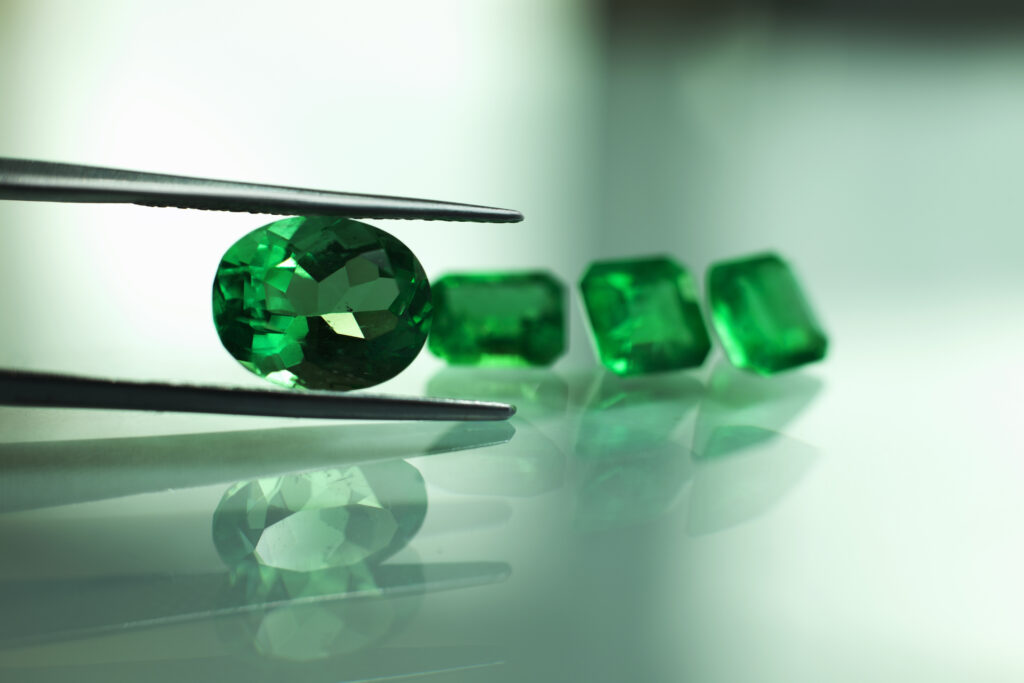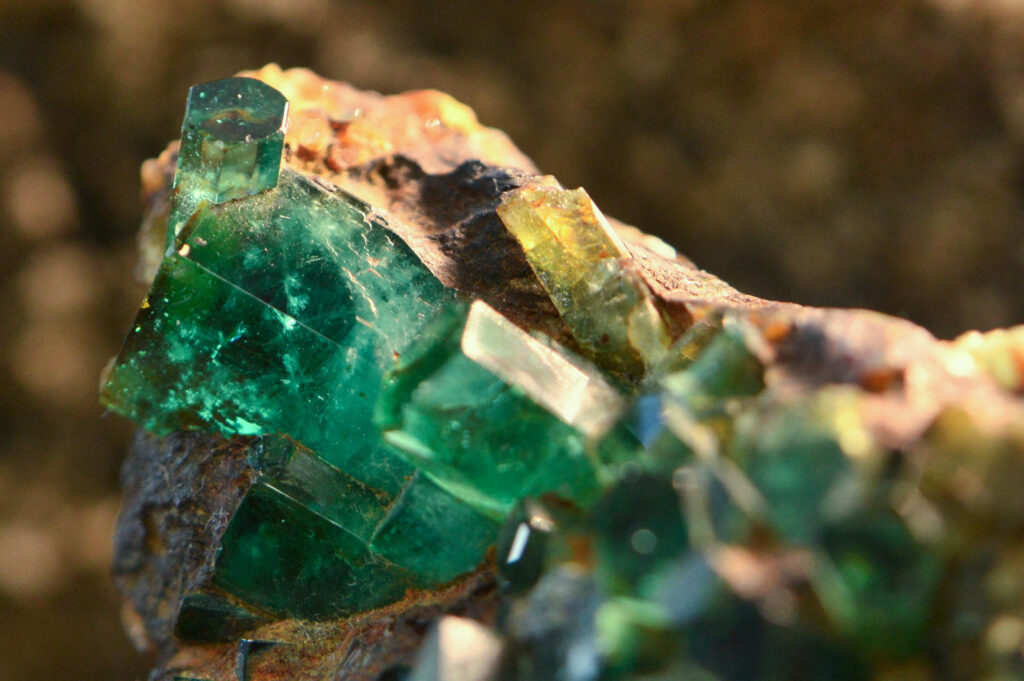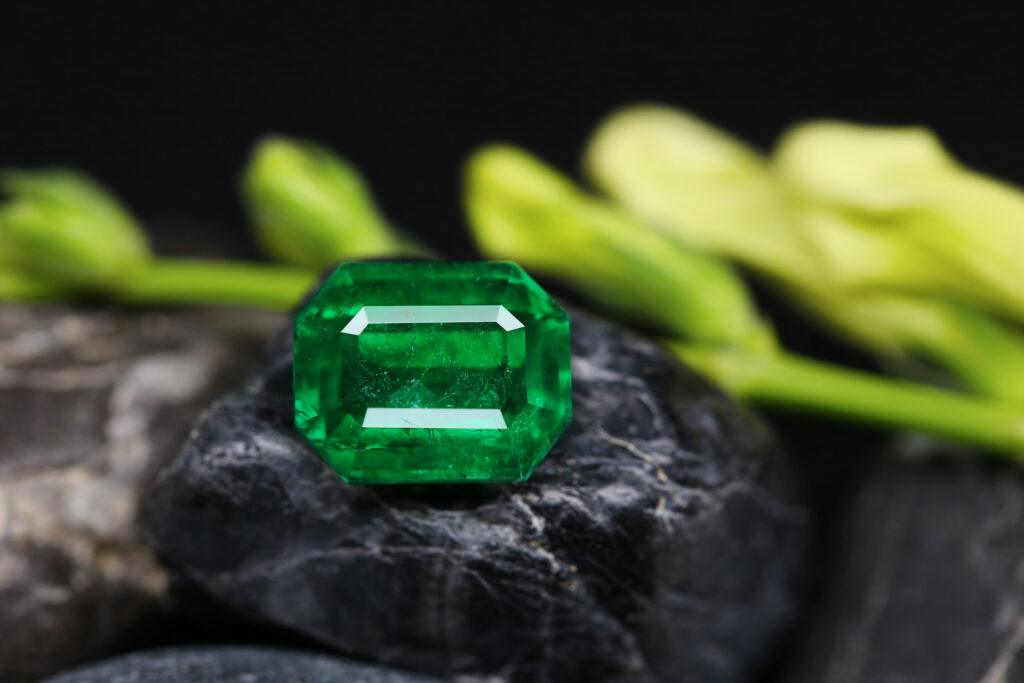Emeralds, those captivating green jewels, were adored by Cleopatra and glitter on the tiara of Queen Elizabeth II. Prized by the Incas, used for sacred inscriptions by Indian Shas and traded for gold by the Spanish, the emerald’s verdant green symbolizes paradise, royalty, and immortality. As rare as they are beautiful, the allure of the emerald has endured for thousands of years.
Rarer even than diamonds, natural emeralds are found mainly in Colombia, Brazil, and Zambia, with those originating in the Colombian Muzo valley reaching the highest prices. Natural emeralds can cost as little as $200 or as much $18,000 per carat depending on quality. Synthetic emeralds are less valuable than natural emeralds, with even the highest quality costing around $350 per carat.

The grace and enigmatic beauty of emeralds is unquestionable and a well-placed stone is an asset to both the wearer and the jeweler, but the price varies significantly depending on provenance, intensity of color, and size.
Where do emeralds come from?
Emeralds only form under very particular conditions, hence their particular scarcity, and they are mainly found in Colombia, Brazil, Zambia, and Zimbabwe.

The world’s most valuable emeralds come from the Muzo Valley in the Colombian Andes and are famed for their distinctive deep, clear green.
In May 2019, a spectacular pair of earrings boasting emeralds from this region were sold for $4.4 million dollars.
Like other gems, emeralds can also be synthesized in laboratories.
These are much cheaper than natural emeralds but their creation is a very energy-intensive and slow process, making emeralds among the most expensive synthetic gems.
What affects the quality of an emerald?
Emeralds are graded on a scale from B to AAA and their quality is largely judged by eye.
Color is by far the most important factor, which is judged by its tone and saturation; loosely speaking, the purer the green, the higher the value.
The exceptional clarity and deep, rich color of the coveted Muzo Valley emeralds is what makes them the most valuable.
The per-carat price of an emerald also increases exponentially with size; a 3-carat Colombian stone could be up to 6 times as valuable as three 1-carat Colombian stones of equal quality.
Similarly, a low-quality emerald at 1 carat will cost considerably less than a 1 carat stone of high quality.
Treated (or ‘enhanced’) emeralds whose fissures have been filled with oil or resin to improve clarity, are less valuable but expensive in the long run, as fracture-filling treatments require costly and time-consuming maintenance.
Although a stone’s appearance is improved by treatment initially, resin-treated stones can also become discolored over time, reducing their value.
Unlike other gemstones, the ‘flaws’ in emeralds are not always viewed negatively, as they can add to their moss-like beauty and depth of character.
Inclusions are tolerated far more than they are in other gemstones, and a flawed emerald will not necessarily fetch a lower price. That said, it is still true that in general the closer to flawless a gem is, the more valuable it will be.
Are synthetic emeralds valuable?
Synthetic emeralds are among the most valuable synthetic gems because the process used to create them is very energy and time-intensive.
In terms of chemical composition and physical properties, a synthetic emerald is identical to a natural one, and will usually have higher clarity than natural emeralds.
However, they lack the individual character which the inclusions in natural emeralds create, and are much less valuable due to their origin.

Natural emeralds are the second most costly of the ‘big four’ gemstones (diamonds, rubies, sapphires being the other three) at an average of $169 per carat, but prices vary significantly according to quality.
1 carat of low-grade emerald can cost as little as $200, while 1 carat of a high-quality gem can fetch up to $18,000.
Synthetic emeralds are much cheaper, with even the highest quality costing around $350 for 1 carat.
What are emeralds worth?
The cost of an emerald varies widely according to the quality of the stone, depending largely on their color and clarity – the richer and more saturated the color, the higher the value, and natural stones are more valuable than treated ones.
The per-carat value of an emerald also increases with the size of the stone.
At auction, emerald pieces fetch prices in the millions – the Rockefeller diamond sold for $5.5 million in 2017, and the Taj Mahal emerald for $1.8 million in 2019.
While low quality and synthetic emeralds can be bought for under $50, high-quality gems and jewelry can comfortably sit in the tens of thousands – keeping the intriguing, enigmatic emerald at the height of luxury.
